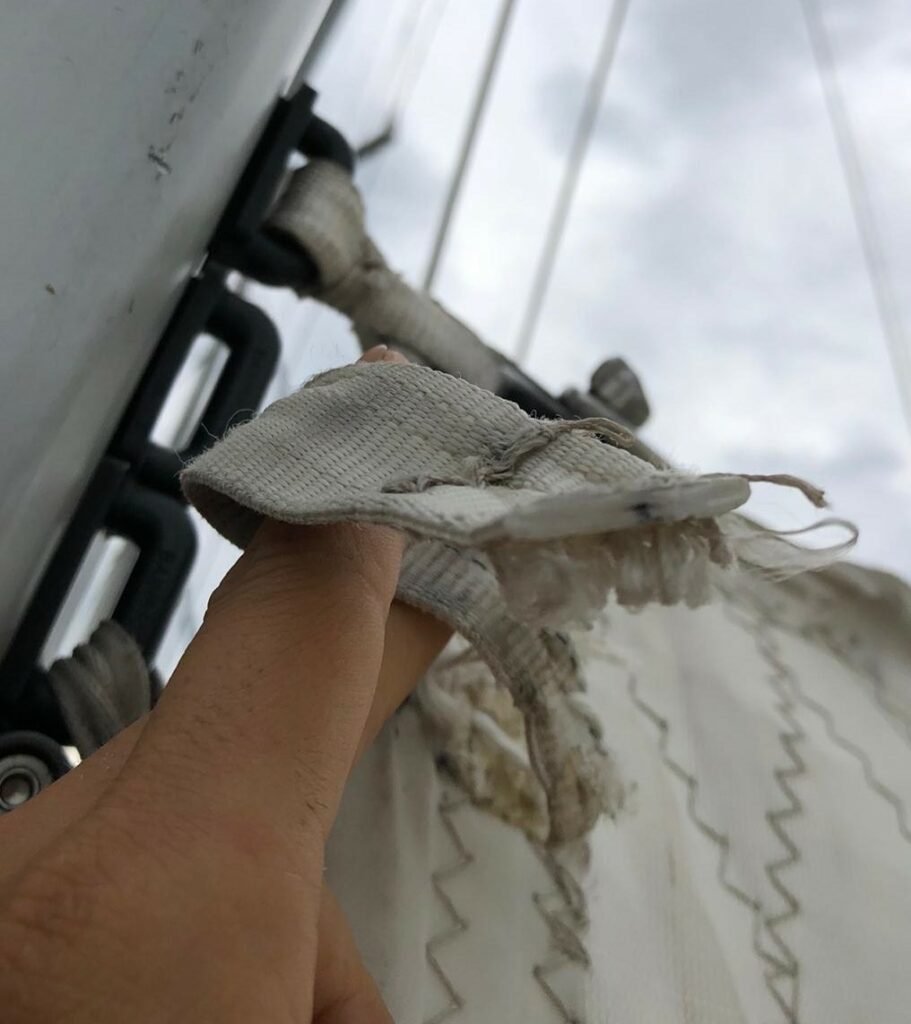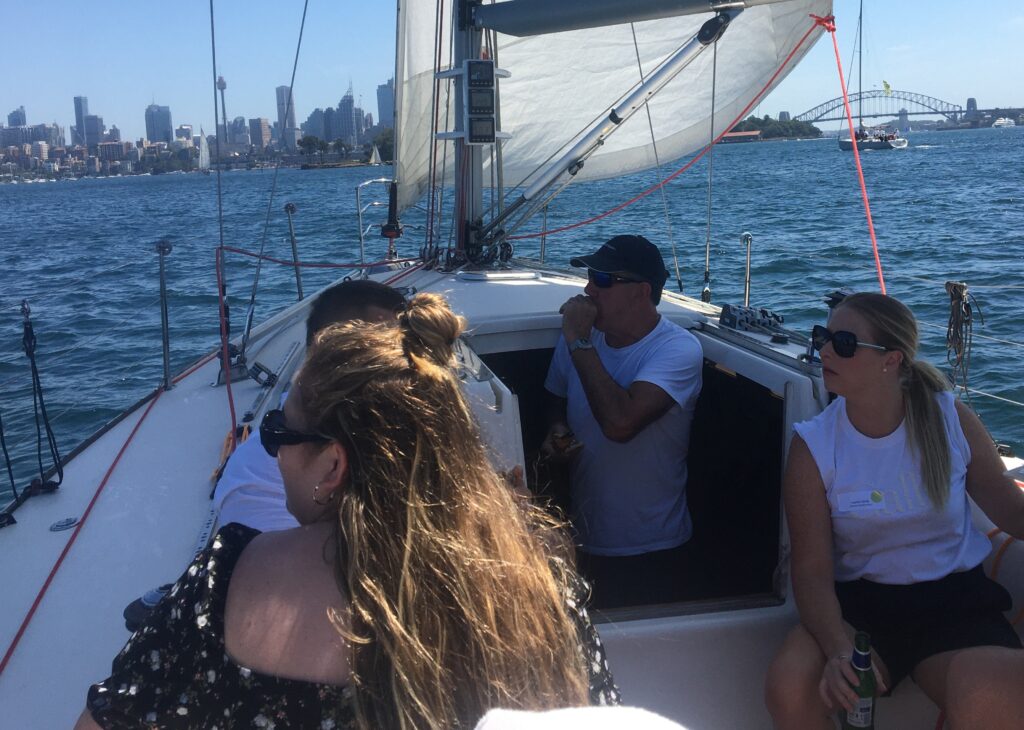Alan Punch, an RYA Navigation Instructor with Navathome Australia, gives some sage advice on how to plan for your next sailing adventure.
There is nothing like the thought of casting off and going wherever the wind takes you to represent the very idea of freedom and to stir thoughts of adventure.
Human history is full of stories that make casting off without a plan or care in the world as part of a life of adventure and freedom. Unfortunately, the real world comes back hard and reality kicks in. The carefree approach just does practically exist.
Considerations such as how much food and water, the condition of your vessel, safety equipment, rules about entering certain countries coastal waters, harbour or mooring availability, navigation charts, weather patterns, boat maintenance and importantly where to find a cold beer when you finish all play a part in planning a voyage.

Commercial operators are required to have a plan before they cast off, and recreational boaters are encouraged to have one. Unfortunately many people hear the term plan and it brings up some negative connotations:
- Prescriptive
- Large and detailed
- Stressful
- Complicated
In reality a plan only needs enough detail for you and your crew to manage the trip safely and have contingencies in place for likely eventualities.
A passage plan is an ordered collection of your thoughts and puts all your ideas in one place, and ensures that you have considered the likely eventualities but more importantly it is for your crew. In most circumstances, the crew would not have thought out about the passage in as much detail as you have.
In a situation where you become incapacitated, such as due to illness or injury, a detailed plan will allow your crew to either continue the voyage or to seek an alternate port of refuge if required. A plan means that your crew do not have to evaluate the trip on the run, but have the benefit of a pre-thought out approach.

How to record a plan:
Under the IMO (International Maritime Organisation), the requirement states that you should have a plan, there is no requirement for it to be formally documented. They don’t need to be, and in practice they should not be large documents. They are useless if no one wants to read it. A plan should only be as detailed as you think you and your crew need.
What we often see with our students is creation of overly detailed plans, ones that they would never actually use. The term plan makes people think that they need to include more than they need to. Every possible scenario, and even non-relevant information. This is nearly always wasted effort as the person writing it gets disgruntled with the amount of work and then stops doing them for future voyages. Make life easier for yourself and include just enough information that someone else could follow your plan without being confused.
The most effective plans are typically the most concise and are broken down into logic sections. For most voyages of up to a few days, anything more than two pages is too much.
Let’s consider the sections of a reasonable plan.

Overview:
- Vessel details
- Crew details and next of kin
- High level description of the voyage including the potential destinations
- Key vessel documents for the voyage
- Required charts for the voyage
Departure and arrival port information:
- Restrictions based on tide
- Clearances both under bridges, and for depths
- Harbour reporting requirements
- Fees
- Include pilotage details and sketches if needed for all ports. Remember even if you have seen the port before, your crew may not have. As a result, having a pilotage sketch for the ports can help avoid confusion in close quarters. It means you don’t have to run down and look at a very expensive chart every five minutes as you navigate a harbour that can look very different at ground level than you anticipated.
International passages have an even greater planning requirement. Nations have their own laws for visiting yachts, and as a skipper it is your responsibility to comply with them. Depending on the country you could be up for significant fines.
Consider the following:
- Customs requirements
- Access permits
- Immigration documents.
- Quarantine and bio-security requirements.
- Licensing requirements. (In some parts of the world they have been known to impound your boat until you can provide a qualification that they recognise – the RYA qualifications are a great default qualification).

Weather conditions:
- Printouts of the weather forecast
- Printouts or references to the tidal information for all the ports.
Rather than write out weather and tide information, make life easier on yourself and take print outs of these pages.
If there is a reasonable period of time between making the plan and the intended date of the voyage, you should include weather conditions that would prompt you to consider delaying the voyage and the reasoning.
Details of the voyage between waypoints:
- True course heading to the next waypoint
- Hazards and areas of concern for the leg
- Alternate port of refuge and under what conditions is it ok to use.
- Where to find tidal or current stream for each leg if applicable.
- Means to verify your waypoint – such as landmarks for a fix, RACON transmitters, or navigation marks.
You should always keep a physical hard copy of the plan in a spot where all the crew know where it is and track your progress on it. As our adoption of technology increases, and more people sail with a laptop on board it becomes tempting to keep copies of the plan electronically. This is great when everything goes well but if you lose power, or the electronics get wet, all that good work is lost. Electronic versions are great for copying parts of your plan for a future trip.
Supplies:
As part of the planning process, you should also determine a few other key things.
- How much fuel you should carry.
- How much water for your crew – In Australia a good rule of thumb is three litres per person per day which allows for cooking and drinking, although in cooler areas two litres per person per day is enough.
- Food (avoid bananas as we all know they are bad luck).
- Spare parts and equipment.
Maintenance:
The other thing to prepare is a maintenance checklist. Before leaving you should go through the boat and check everything is in working order. Ensuring the safety equipment is date, and having the engine serviced are probably the most important. The amount of maintenance and checks that are needed depends on the voyage, but remember it is easier to fix a minor problem before you leave the dock than a bigger problem on the water or in a remote port.

If you maintain the boat well, then the checks take care of themselves. But if you are unfamiliar with the boat the checks help to make sure that nothing has been missed and that you know where everything is and how it works. Checklists just help to make sure you don’t forget things.
While a plan may seem like a large burden, appropriate forethought of a passage will make it a lot easier in the lead up and during the voyage and can make things a lot less stressful as you approach a tricky port or dealing with immigration or customs officials without a personality. This allows you a lot more time to focus on enjoying the trip when you are on the water.

As a skipper you are ultimately responsible for the safety of your crew and having planned the trip is another thing to help ensure their safety, and they are more likely to buy you that beer when you get to shore.
By Alan Punch
Alan Punch is an RYA Navigation Instructor with NAVatHOME Australia, and has a degree in Instrumentation and Control System engineering.

























